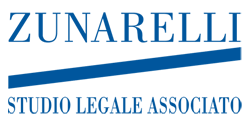
As of October 1 2015, after being tested in a few pilot areas, the Business License reform has officially entered into force over the entire territory of China.
Before examining its key aspects, it is necessary to place the aforementioned reform within the wider legislative framework concerning foreign investment in the PRC. Indeed, the entire subject has been, and will be, object of numerous interventions aimed at its reorganization. The ratio could be found in the need, felt by the Beijing government, to mitigate the higher costs that foreign companies are having to deal with in order to operate in the Chinese market, by means of a widening of the activities allowed to foreign investors, as well as a simplification and increased efficiency of its bureaucratic operations.
A first step towards attaining this objective concerns the issuing of the new Catalogue for Foreign Investment approved by the National Development and Reform Commission, in force since last April. Compared to the previous edition, there has been a significant reduction in both the industrial sectors limited to foreign investment and those where the establishment of a Joint Venture is required.
As for the modification of the procedure regarding the Business License, the Chinese government initiated the so-called reform of the “three in one” (Circular on Implementing the “Three-in-One Certificate” Business Registration System Reform). In fact, upon its entry into force, obtaining the business license, the organization code certificate and the tax registration certificate separately and from three different authorities will no longer be necessary. The local AIC (Administration for Industry and Commerce) will instead issue a single and comprehensive business license with a unified “social credit code”.
It will hence be possible to obtain the new license only through a single application and by submitting all the required documentation to a single authority.
Prior to the reform, in order to obtain a new registration, it was necessary to submit three different certificates issued by the State Administration for Industry and Commerce (SAIC), by the General Administration for Quality Supervision and Inspection and Quarantine (AQSIQ) and by the State Administration of Taxation (SAT) respectively.
The goal is to provide great benefits to applicants by simplifying and shortening the procedure.
Enterprises that have a Business License issued before the reform will keep the three different certificates for the entire transition period which will continue until 31 December 2017. However, during that period, if a request is made for changes in the registration, the local AIC office will replace the aforementioned documents by issuing a Business License in compliance with the new regulations.
This reform will be able to yield benefits for both small and medium/large commercial entities, keeping the Chinese market particularly attractive for the development of their investments.
(Shanghai Office – Mattia Nannini – 0086 21 51501952)









